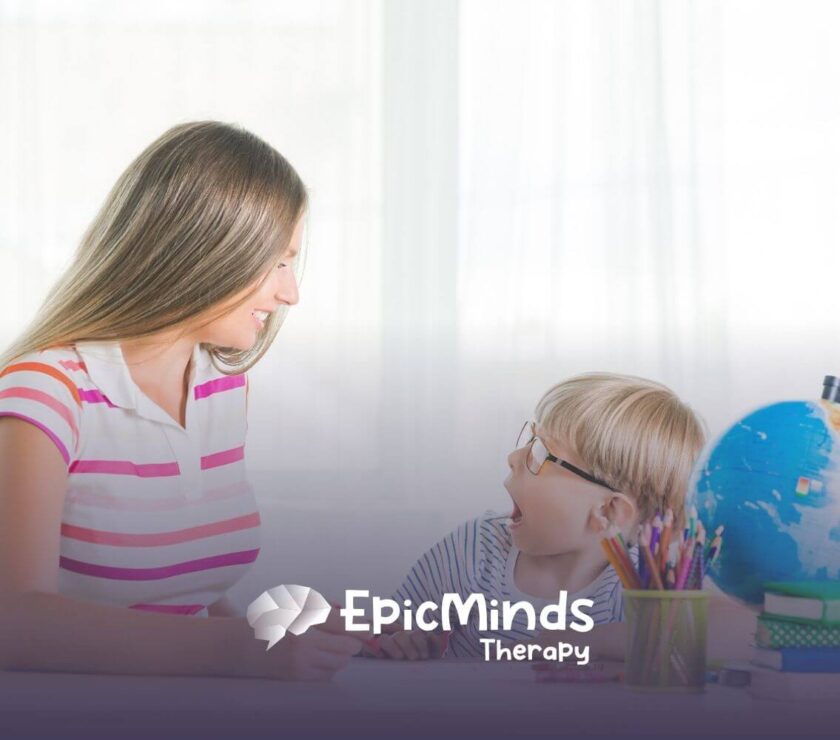Key Highlights
ABA therapy for autism transforms play into powerful opportunities for growth. Through play-based ABA strategies, children learn vital social, communication, and life skills — all while having fun and building confidence.
Here’s what makes ABA play therapy so effective:
- ABA therapy uses structured and play-based methods to teach essential life skills.
- Positive reinforcement makes learning engaging and meaningful.
- Play therapy encourages functional play — helping children use toys with purpose.
- Discrete Trial Training (DTT) and Natural Environment Teaching (NET) support consistent skill development.
- Play-based ABA therapy fosters social and emotional growth.
- A mix of structured and unstructured play promotes creativity and independence.
I’ve always believed that play is a child’s first language. It’s how they explore, communicate, and connect with others. In my work as an ABA therapist, I’ve seen the magic that happens when we turn structured teaching into playful discovery — every laugh, turn, and shared moment becomes part of real learning.
Play-based ABA therapy gives children on the autism spectrum the tools to grow in communication, attention, and emotional understanding. By combining structure with spontaneity, we help kids not only develop essential life skills but also experience the pure joy of learning through play.
The Importance of Play in ABA Therapy
In ABA therapy, play isn’t just a reward — it’s a powerful teaching tool. Play gives children a safe, motivating environment to practice communication, problem-solving, and social skills naturally.
Before diving into specific ABA techniques for play, let’s talk about why play matters so much in child development and autism intervention.
How Play Supports Child Development and Learning
Play is the foundation of child development. Whether stacking blocks or pretending to be a superhero, children build essential motor, language, and emotional skills through these experiences.
In ABA therapy for autism, play helps children explore cause and effect, learn emotional regulation, and strengthen fine motor coordination. During interactive play, they also learn how to share, express needs, and communicate effectively — all essential for lifelong growth.
Why Play Is Central to ABA Therapy for Children with Autism
Children on the autism spectrum may struggle with unstructured play or social interaction. ABA therapy bridges that gap by turning play into purposeful learning.
For example, if a child loves toy trains, I might use that interest to teach turn-taking, imitation, or sharing. This kind of play-based ABA therapy not only builds skills — it keeps the child motivated and engaged. Over time, it helps them connect play with communication, curiosity, and confidence.
Foundational ABA Strategies for Teaching Play Skills
ABA therapy for play skills uses structured, evidence-based strategies to help children learn step by step. The goal is to make learning clear, consistent, and enjoyable.
Discrete Trial Training (DTT) for Building Play Skills
Discrete Trial Training (DTT) is one of the core ABA teaching techniques. It involves breaking complex skills into smaller, easy-to-learn steps.
Let’s say I’m teaching a child to build a tower. I might start with, “Put one block on.” When they do it, they receive immediate positive reinforcement — maybe a smile, a sticker, or access to a favorite toy. This repetition builds confidence and mastery over time.
DTT helps children with autism learn functional play behaviors in a structured way that feels predictable and rewarding.
Natural Environment Teaching (NET) to Encourage Functional Play
Natural Environment Teaching (NET) brings ABA principles into everyday moments. Instead of structured drills, we teach through natural play routines that feel spontaneous and real.
If a child is rolling cars across the floor, I might join in and model new ways to play — making “vroom” sounds or showing how to race two cars together. These moments teach imitation, turn-taking, and shared attention in a way that feels like pure fun.
NET helps children generalize skills outside therapy sessions, applying what they learn in real-life play with parents, teachers, and peers.
Types of Play Addressed in ABA Therapy
ABA therapy encourages all forms of play — from functional play (using toys as intended) to imaginative play (pretend games and role-play). Each type of play supports different developmental goals, from communication to problem-solving.
Structured vs. Unstructured Play Techniques in ABA
In my sessions, I use a mix of structured and unstructured play to balance learning and creativity:
| Category | Structured Play | Unstructured Play |
| Description | Guided by an adult with clear goals | Child-led exploration and imagination |
| Examples | Puzzles, turn-taking games, or role-playing routines | Building freely with blocks, pretend play, or sensory play |
| Benefits | Teaches focus, rule-following, and problem-solving | Fosters creativity, independence, and emotional expression |
Structured play builds foundational skills, while unstructured play lets children explore freely — both are essential in ABA play therapy for balanced growth.
Examples of Play-Based ABA Activities
Play-based ABA therapy uses engaging, hands-on activities that turn learning into playtime. Some of my favorites include:
- Pretend Play: Running a “store” or “kitchen” to teach social communication.
- Building Blocks: Strengthening fine motor skills and teamwork.
- Sensory Bins: Encouraging sensory exploration with textures like sand, rice, or water.
- Board Games: Teaching turn-taking, patience, and sportsmanship.
- Art and Crafts: Promoting creativity and language development.
Each activity supports skill-building in a fun, natural, and motivating way — one of the reasons ABA activities for kids are so effective.
Using ABA to Foster Functional and Exploratory Play
Functional and exploratory play are stepping stones to creativity, problem-solving, and independence. ABA therapy encourages these skills by following a child’s curiosity while gently guiding new learning.
Building Motivation and Engagement in Play Sessions
Motivation is everything in play-based ABA therapy. I always start with what the child already loves — whether that’s dinosaurs, trains, or bubbles — and build from there.
Positive reinforcement keeps sessions upbeat and rewarding. Praising effort (“You tried that all by yourself!”) or giving short breaks helps maintain engagement.
A few simple strategies that work wonders:
- Use the child’s favorite characters or toys
- Give choices to promote independence
- Keep sessions short and lively
- Join in the play to model fun and connection
Encouraging Exploration and Investigative Play
Exploratory play is how children learn to think creatively and experiment. ABA therapy uses modeling, prompting, and reinforcement to help children explore new toys and environments safely.
I often describe and model curiosity — pressing buttons, stacking objects, or describing textures: “This one’s squishy! What happens if we roll it?” These interactions teach cause and effect, language, and cognitive flexibility in natural, joyful ways.
Addressing Common Challenges When Teaching Play Skills
Every child learns differently. Some may resist play, while others struggle with social communication. ABA therapy helps overcome these barriers through patience, structure, and creativity.
Strategies for Overcoming Resistance to Play
When a child resists new activities, I use the “Join, Imitate, Expand” approach:
- Join the child’s current play to build trust.
- Imitate what they’re doing to create connection.
- Expand by introducing a new idea or toy.
This gentle, relationship-based method reduces anxiety and encourages exploration. Other strategies include using visuals, offering choices, and celebrating even the smallest efforts with genuine praise.
Managing Social and Communication Challenges in Play
Play is inherently social — but for many children with autism, it can be tricky. ABA therapy teaches these skills in a safe, supportive environment.
Using role-playing and social stories, we practice skills like turn-taking, sharing, and reading emotions. Visual aids and modeling help children understand how to interact with peers naturally. Over time, this builds confidence and real-world social readiness.
Promoting Group Play and Peer Interaction with ABA
Group play is where social skills truly shine. ABA therapy provides structured, supportive ways for children to interact, share, and collaborate with peers — all while having fun.
ABA Techniques for Cooperative and Parallel Play
Children often start with parallel play (playing beside peers) before moving to cooperative play (playing together toward a goal). ABA therapists guide this transition through structured, encouraging activities.
For example, I might set up a shared goal like building a tall tower or playing a simple team game. By reinforcing small successes — like sharing a toy or taking a turn — children learn that collaboration can be exciting and rewarding.
Facilitating Communication and Social Skills Through Group Activities
Group ABA activities are powerful tools for teaching communication and emotional understanding. Some of the most effective include:
- Team Games: Reinforce turn-taking and fairness.
- Collaborative Art Projects: Encourage communication and creativity.
- Pretend Group Scenarios: Practice social conversations.
- Positive Reinforcement: Celebrate every social success.
When children experience the joy of shared play, they not only build social skills — they build confidence in connecting with others.
Conclusion
Play-based ABA therapy is one of the most effective, joyful ways to teach children with autism the skills they need to thrive. It blends science with fun, helping children build communication, independence, and social connection naturally.
Every game, every block tower, every giggle becomes a learning opportunity. As ABA professionals and parents, we have the privilege of guiding those moments — turning small steps into lasting growth.
At Epic Minds Therapy, we’re passionate about helping families across North Carolina experience the transformative power of ABA therapy.
Our compassionate team offers individualized programs such as in-home ABA therapy — where children can learn and grow in the comfort of their own environment — and school-based ABA, designed to support academic success and positive classroom behavior.
If you’re ready to see how play-based ABA can make a difference in your child’s life, we’d love to help. Contact Epic Minds Therapy today to schedule a free consultation and take the first step toward empowering your child’s potential through meaningful, personalized ABA therapy.
Frequently Asked Questions
How do ABA therapists track progress in play skills?
ABA therapists use direct observation and data collection to measure how a child interacts with toys, peers, and tasks. Progress tracking ensures that goals are personalized and continually adjusted for growth.
What role do parents play in ABA play therapy?
Parents are key partners. By practicing play strategies at home — like prompting, imitation, and positive reinforcement — they help their child generalize skills learned in therapy into daily life.
Are ABA play strategies suitable for older children or kids with multiple diagnoses?
Yes! ABA therapy is highly flexible. Whether your child is younger or older, on the autism spectrum or has multiple developmental challenges, ABA strategies can be customized to their specific needs and abilities.
Sources:
- https://pubmed.ncbi.nlm.nih.gov/38917993/
- https://pmc.ncbi.nlm.nih.gov/articles/PMC9850869/
- https://www.marcus.org/autism-resources/autism-tips-and-resources/promoting-early-play-skills
- https://www.whittington.nhs.uk/default.asp?c=46140
- https://iidc.indiana.edu/irca/articles/play-time-an-examination-of-play-intervention-strategies-for-children-with-autism-spectrum-disorders.html




